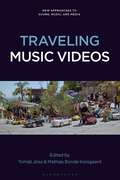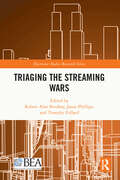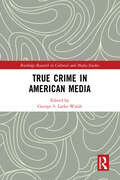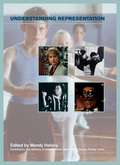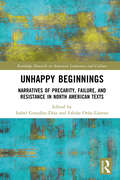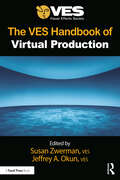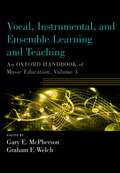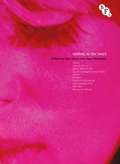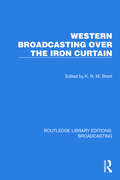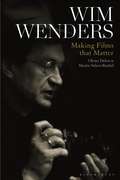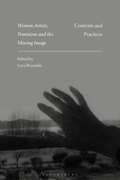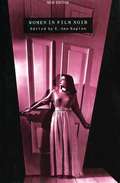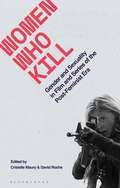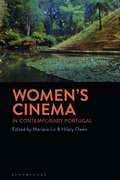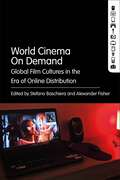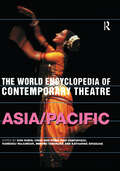- Table View
- List View
Trapeze act (UEB uncontracted)
This page shows two trapeze artists performing their act. They are seen from the side so each of them has only one arm and leg visible. Also on the page, there are two supporting towers, two trapezes and a safety net. The scene has a dashed line image border. There is a locator dot shown, which will be at the top left of the page when the image is the right way up. At the top of the page the ropes of the two trapezes can be found hanging. They are attached to points above, which cannot be found as they are outside the image border. In the centre of the page are the two small images of the performers. The one to the left hangs upside down with his legs hooked over the trapeze with his head to the right and his arm down the page. The performer to the right is flying horizontally through the air with his arm to the left, his hand ready to grasp the hand of the other artist. To the right of his arm are his head, chest and leg. His lower leg and foot point up the page. On the left and right of the page are two towers with a safety net, seen from the side, stretched between them. At the bottom of the page is the ground.
Traveling Music Videos (New Approaches to Sound, Music, and Media)
Traveling Music Videos offers a new interdisciplinary perspective on how contemporary music videos travel across, shape, and transform various media, online platforms, art institutions, and cultural industries worldwide. With the onset of digital technologies and the proliferation of global video-sharing websites at the beginning of the 21st century, music video migrated from TV screens to turn instead to the internet, galleries, concert stages, and social media. As a result, its aesthetics, technological groundings, and politics have been radically transformed. From the kinaesthetic experience of TikTok to the recent reimaginations of maps and navigation tools through music video cartographies, from the ecofeminist voices mediated by live-stream concerts to the transmedia logic of video games and VR, from the videos' role in contemporary art galleries to their political interventions -the chapters map the ways music video is continually reconfiguring itself. The volume tracks music video's audiovisual itineraries across different geographies, maps its transmedia routes, and tackles the cultural impact that it has on our current media ecosystem.
Triaging the Streaming Wars (ISSN)
This volume considers the different implications of the rise of streaming services and their particular acceleration during the COVID-19 pandemic. Exploring the significant disruption caused to the entertainment industries by the rise of these streaming services, a team of international scholars examine changes to labor issues and compensation, which were central to the conflict between the Writers Guild of America members and their agents, the broadening divide between networks and affiliates, the significant consolidation of the media industry resulting from Disney’s acquisition of Fox ahead of the launch of Disney+, and the variety of business models behind these services that defy the traditional advertising models and standard revenue streams. This thorough and multifaceted look at this rapidly growing section of the entertainment industry will be of interest to academics and students working in film and TV studies, media industry studies, digital media studies, business, and communication studies.
True Crime in American Media (Routledge Research in Cultural and Media Studies)
This book explores contemporary American true crime narratives across various media formats. It dissects the popularity of true crime and the effects, both positive and negative, this popularity has on perceptions of crime and the justice system in contemporary America. As a collection of new scholarship on the development, scope, and character of true crime in twenty-first century American media, analyses stretch across film, streaming/broadcast TV, podcasts and novels to explore the variety of ways true crime pervades modern culture. The reader is guided through a series of interconnected topics, starting with an examination of the contemporary success of true crime, the platforms involved, the narrative structures and engagement with audiences, moving on to debates on representation and the ethics involved in portraying both victims and perpetrators of crime within the genre. This collection provides new critical work on American true crime media for all interested readers, and especially scholars and students in the humanities and social sciences. It offers a significant area of research in social sciences, criminology, media and English Literature academic disciplines.
Understanding Representation (Understanding the Moving Image)
This is the third book in the 'Understanding the Moving Image' series. Like other books in the series, it aims to provide a strong critical and theoretical base for the study of the media. It has been co-authored by experienced Media and Film Studies tutors, offering fresh and innovative ways of talking about the key concept of representation. How is the world mediated to deliver messages and create beliefs about groups such as the mentally ill, institutions like the family and schools, minority and marginalised people and issues of nation seen through football and films? It also looks outside our ethnocentric mediated world to see how we are represented to others. The choice of texts reflects both an attempt to push the boundaries of the study of representation with new research, but also to make it accessible and stimulating for students coming into this area for the first time. Case studies reflect contemporary concerns in the media, often from different perspectives.
Unhappy Beginnings: Narratives of Precarity, Failure, and Resistance in North American Texts (Routledge Research in American Literature and Culture)
This book offers the analysis of a selection of North American texts that dismantle and resist normative frames through the resignification of concepts such as unhappiness, precarity, failure, and vulnerability. The chapters bring to the fore how those potentially negative elements can be refigured as ambivalent sites of resistance and social bonding. Following Sara Ahmed’s rereading of happiness, other authors such as Judith Butler, Wendy Brown, Jack Halberstam, Lauren Berlant, or Henry Giroux are mobilized to interrogate films, memoirs, and novels that deal with precarity, alienation, and inequality. The monograph contributes to enlarging the archives of unhappiness by changing the focus from prescribed norms and happy endings to unruly practices and unhappy beginnings. As the different contributors show, unhappiness, precarity, vulnerability, or failure can be harnessed to illuminate ways of navigating the world and framing society that do not necessarily conform to the script of happiness—whatever that means.
The VES Handbook of Virtual Production
The VES Handbook of Virtual Production is a comprehensive guide to everything about virtual production available today – from pre-production to digital character creation, building a stage, choosing LED panels, setting up Volume Control, in-camera compositing of live action and CG elements, Virtual Art Departments, Virtual Previs and scouting, best practices and much more.Current and forward-looking, this book covers everything one may need to know to execute a successful virtual production project – including when it is best to use virtual production and when it is not. More than 80 industry leaders in all fields of virtual production share their knowledge, experiences, techniques, and best practices. The text also features charts, technical drawings, color images, and an extensive glossary of virtual production terms.The VES Handbook of Virtual Production is a vital resource for anyone wishing to gain essential knowledge in all aspects of virtual production. This is a must-have book for both aspiring and veteran professionals. It has been carefully compiled by the editors of The VES Handbook of Visual Effects.
Vocal, Instrumental, and Ensemble Learning and Teaching: An Oxford Handbook of Music Education, Volume 3 (Oxford Handbooks)
Vocal, Instrumental, and Ensemble Learning and Teaching is one of five paperback books derived from the foundational two-volume Oxford Handbook of Music Education. Designed for music teachers, students, and scholars of music education, as well as educational administrators and policy makers, this third volume in the set emphasizes the types of active musical attributes that are acquired when learning an instrument or to sing, together with how these skills can be used when engaging musically with others. These chapters shed light on how the field of voice instruction has changed dramatically in recent decades and how physiological, acoustical, biomechanical, neuromuscular, and psychological evidence is helping musicians and educators question traditional practices. The authors discuss research on instrumental learning, demonstrating that there is no 'ideal' way to learn, but rather that a chosen learning approach must be appropriate for the context and desired aims. This volume rounds out with a focus on a wide range of perspectives dealing with group performance of instrumental music, an area that is organized and taught in many varied ways internationally. Contributors Alfredo Bautista, Robert Burke, James L. Byo, Jean Callaghan, Don D. Coffman, Andrea Creech, Jane W. Davidson, Steven M. Demorest, Robert A. Duke, Robert Edwin, Shirlee Emmons, Sam Evans, Helena Gaunt, Susan Hallam, Lee Higgins, Jere T. Humphreys, Harald Jers, Harald Jørgensen, Margaret Kartomi, Reinhard Kopiez , William R. Lee, Andreas C. Lehmann, Gary E. McPherson, Steven J. Morrison, John Nix, Ioulia Papageorgi, Kenneth H. Phillips, Lisa Popeil, John W. Richmond, Carlos Xavier Rodriguez, Nelson Roy, Robert T. Sataloff, Frederick A. Seddon, Sten Ternström, Michael Webb, Graham F. Welch, Jenevora Williams, Michael D. Worthy
Warhol in Ten Takes
Andy Warhol remains one of the world's most influential artists, and his reputation has only grown since his death in 1987. He first picked up a film camera in 1963. Within the space of five years, he made around 650 films. These are now recognised as a hugely significant part of Warhol's oeuvre, vital for understanding his output as a whole. Warhol in Ten Takes provides a comprehensive introduction to Warhol's film-making alongside ten essays on individual films (from canonical classics such as The Chelsea Girls, to sorely neglected titles such as Bufferin) from leading scholars of cinema, art and culture. Drawing on research from the Warhol archives, newly-unearthed images, and original interviews with denizens of the Factory, this book explores the richness and variety of Warhol's films and interrogates accepted perspectives on them – while acknowledging the challenge of ever fully coming to terms with the life and career of this extraordinary artist.
Western Broadcasting over the Iron Curtain (Routledge Library Editions: Broadcasting #38)
Western Broadcasting Over the Iron Curtain (1986) examines the development of broadcasting policy by Western democracies, levels of government control of policy, efforts by communist regimes to minimize the effects of western broadcasting, and Soviet and Eastern European audience opinions on such diverse subjects as the success or failure of socialism and the Korean airline disaster.
Wim Wenders: Making Films that Matter
Wim Wenders: Making Films That Matter is the first book in 15 years to take a comprehensive look at Wim Wenders's extensive filmography. In addition to offering new insights into his cult masterpieces, the 10 essays in this volume highlight the thematic and aesthetic continuities between his early films and his latest productions. Wenders's films have much to contribute to current conversations on intermediality, whether it be through his adaptations of important literary works or his filmic reinventions of famous paintings by Edward Hopper or Andrew Wyeth. Wenders has also positioned himself as a decidedly transnational and translingual filmmaker taking on the challenge of representing peripheral spaces without falling into the trap of a neo-colonial gaze. Making Films That Matter argues that Wenders remains a true innovator in both his experiments in 3D filmmaking and his attempts to define a visual poetics of peace.
Women Artists, Feminism and the Moving Image: Contexts and Practices
What is the significance of gendered identification in relation to artists' moving image? How do women artists grapple with the interlinked narratives of gender discrimination and gender identity in their work? In this groundbreaking book, a diverse range of leading scholars, activists, archivists and artists explore the histories, practices and concerns of women making film and video across the world, from the pioneering German animator Lotte Reiniger, to the influential African American filmmaker Julie Dash and the provocative Scottish contemporary artist Rachel Maclean. Opening with a foreword from the film theorist Laura Mulvey and a poem by the artist film-maker Lis Rhodes, Women Artists, Feminism and the Moving Image traces the legacies of early feminist interventions into the moving image and the ways in which these have been re-configured in the very different context of today. Reflecting and building upon the practices of recuperation that continue to play a vital role in feminist art practice and scholarship, essays discuss topics such as how multiculturalism is linked to experimental and activist film history, the function and nature of the essay film, feminist curatorial practices and much more. This book transports the reader across diverse cultural contexts and geographical contours, addressing complex narratives of subjectivity, representation and labour, while juxtaposing cultures of film, video and visual arts practice often held apart. As the editor, Lucy Reynolds, argues: it is at the point where art, moving image and feminist discourse converge that a rich and dynamic intersection of dialogue and exchange opens up, bringing to attention practices which might fall outside their separate spheres, and offering fresh perspectives and insights on those already established in its histories and canons.
Women in Film Noir
The first edition of 'Women in Film Noir' (1978) assembled a group of scholars and critics committed to understanding the cinema in terms of gender, sexuality, politics, psychoanalysis and semiotics. This edition is expanded to include further essays which reflect the renewed interest in Film Noir. Exploring 'neo-noir', postmodernism and other contemporary trends, new essays offer readings of, among others, 'Bound' and 'Basic Instinct', broadening the scope of the book to include questions of race and homosexuality.
Women Who Kill: Gender and Sexuality in Film and Series of the Post-Feminist Era (Library of Gender and Popular Culture)
Women Who Kill explores several lines of inquiry: the female murderer as a figure that destabilizes order; the tension between criminal and victim; the relationship between crime and expression (or the lack thereof); and the paradox whereby a crime can be both an act of destruction and a creative assertion of agency. In doing so, the contributors assess the influence of feminist, queer and gender studies on mainstream television and cinema, notably in the genres (film noir, horror, melodrama) that have received the most critical attention from this perspective. They also analyse the politics of representation by considering these works of fiction in their contexts and addressing some of the ambiguities raised by postfeminism.The book is structured in three parts: Neo-femmes Fatales; Action Babes and Monstrous Women. Films examined include White Men Are Cracking Up (1994); Hit & Miss (2012); Gone Girl (2014); Terminator (1984); The Walking Dead (2010); Mad Max: Fury Road (2015); Contagion (2011) and Ex Machina(2015) among others.
Women's Cinema in Contemporary Portugal
Women's Cinema in Contemporary Portugal brings together scholars from Portugal, UK and the USA, to discuss 14 women film directors in Portugal, focussing on their production in both feature film and documentary genres over the last half-century. It charts the specific cinematic visions that these women have brought to the re-emergence of Portuguese national cinema in the wake of the 1974 Revolution and African decolonisation, and to the growing internationalisation of Portugal's arguably 'minor' or 'small nation' cinema, with significant young women directors such as Leonor Teles achieving prominence abroad. The history of Portuguese women's cinema only begins systematically after the 1974 revolution and democratisation. This collection shows how female auteurs made a specific mark on Portugal's post-revolutionary conceptualisation of a differently 'national' cinema, through the ethnographic output of the late 1970s. It goes on to explore women's decisively gendered interventions in the cinematic memory practices that opened up around the masculine domain of the Colonial Wars in Africa. Feminist political issues such as Portugal's 30-year abortion campaign and LGBT status have become more visible since the 1990s, alongside preoccupations with global concerns relating to immigration, transit and minority status communities. The book also demonstrates how women have made specific contributions to the evolution of soundscapes, the genre of essay cinema, film's relationship to the archive, and the adaptation of the written word. The result is a powerful, provocative and definitive challenge to the marginalisation of Portuguese female-directed film in terms of 'double minority'.
World Cinema On Demand: Global Film Cultures in the Era of Online Distribution
World Cinema on Demand brings together diverse contributions by leading film and media scholars to examine world cinema's dialogue with the transformations that took place during 2010-2014, engaging directly with ongoing debates surrounding national cinema, transnational identity, and cultural globalization, as well as ideas about genre, fandom and cinephilia. The contributions look at individual national patterns of online distribution, engaging with archives, SVODS and torrent communities. The essays also investigate the cross-cultural presence of world cinema in non-domestic online markets (such as Europe's, for example). As a result, the volume sheds light on geo-politically specific issues of film circulation, consumption and preservation within a range of culturally diverse filmmaking contexts, including case studies from India, Nigeria, Mexico and China. In this way, the collection maps the impact of different online formats of distribution in the understanding of World Cinema, underlining the links between distribution and media provisions as well as engaging with new forms of intermediation.
The World Encyclopedia of Contemporary Theatre: Volume 5: Asia/Pacific
This new paperback edition provides a unique examination of theatre in Asia and the Pacific and is written by leading experts from within the countries covered. Its far-reaching scope and broad interpretation of theatre (to include all types of performance) set it apart from any other similar publication. Entries on 33 Asian countries are featured in this volume, preceded by introductory essays on Asian Theatre, Theatre in the Pacific, History and Culture, Cosmology, Music, Dance, Theatre for Young Audiences, Mask Theatre and Puppetry.The volume contains approximately 300,000 words and includes national essays of up to 25,000 words each. The countries include:Afghanistan * Australia * Bangladesh * Bhutan * Brunei * Cambodia * India * Indonesia * Iran * Japan * Kazakhstan *Kirghizia * Laos * Malaysia * Myanmar * Mongolia * Nepal *New Zealand * Pakistan * Papua New Guinea * PhilippinesNew Zealand * Pakistan * Papua New Guinea * Philippines *Singapore * South Korea * South Pacific * Sri Lanka * Tadjikistan * Thailand * Turkmenistan * Vietnam

